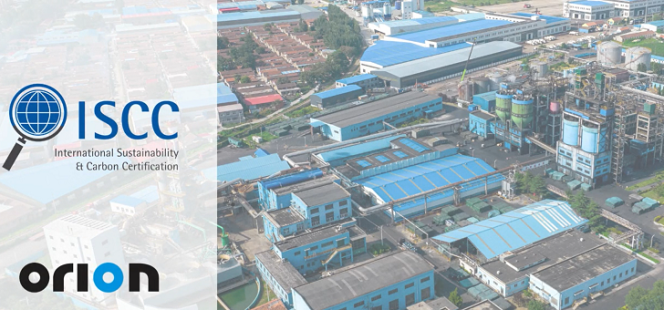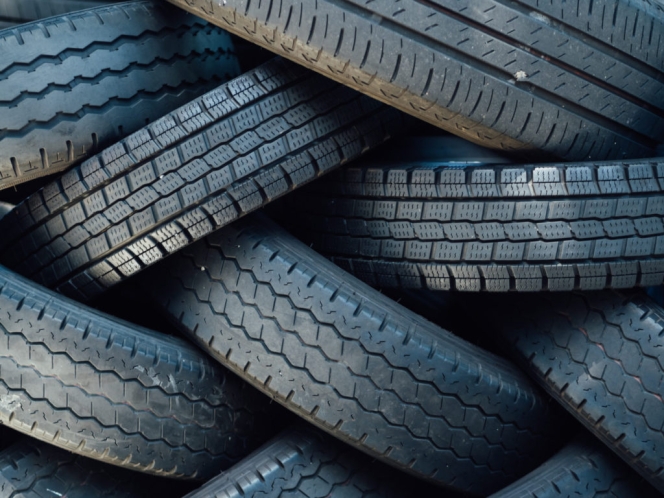
- Plastic ( soft or malleable) at normal ambient temperatures
- A melting point above approximately 45 °C.
- A relatively low viscosity when melted (unlike many plastics)
- Insoluble in water
- Hydrophobic

We shall be discussing here on the waxes which are only being used in the rubber and plastic industry. Beeswax, perhaps , is the first wax which used by human in the beginning of our civilization, was one of the important renewable source of fuel. The honey comb formed by bees has typical hexagonal geometric pattern (Fig.1). Bees wax is used in tire building drum, if the rubber is too sticky, it can also be used in two roll mill to take care of rubber sticking to the rolls. It is frequently being used in the BC, MC, PC, TB inner-tube making industry during pre-forming operation in the green stage when inner-tubes are expanded under mild air pressure just before curing in mold.
The main commercial source of wax is, however, crude oil but not all crude oil refiners produce wax. "Mineral" wax can also be produced from lignite. Plants, animals and even insects produce materials sold in commerce as "wax". There are five categories of waxes being used in rubber industries :
- Bees Wax
- Paraffin Wax - made of long-chain alkane hydrocarbons
- Microcrystalline Wax - with very fine crystalline structure
- Chlorinated Paraffin Wax
- Polyethylene Wax
- Chlorinated Polyethylene Wax
The major uses of petroleum based waxes are in rubber, cosmetics and in Candle industry. They are generally white in color but show usual brown color (Fig.2) due to contaminated with oil traces. Two types of waxes, in general, are used in rubber industry, Paraffinic wax and Microcrystalline wax. Its normal dose is 1-3 phr and high level of wax impairs low temperature flexibility and compression set. Rubber compounder considers wax as a very important processing aid because it has following advantages:
- Improves mixing properties

Fig No 2
Petroleum Based Wax - Improves dispersion of filler and other ingredients
- Improves extrusion properties
- Improves upon extrudate and calendared surface finish
- Protects surface and acts as antioxidant /antiozonate
Paraffin and Microcrystalline waxes are derived from petroleum. They are easy to recover and offer a wide range of physical properties that can often be tailored by refining processes. Most producers offer two distinct types of petroleum waxes: paraffins, which are distinguished by large, well formed crystals; and microcrystallines, which are higher melting waxes with small, irregular crystals. Microcrystalline wax contains substantial proportions of branched and cyclic saturated hydrocarbons in addition to normal alkanes.
Some producers also sell "intermediate" wax, in which the boiling range is cut where the transition in crystal size and structure occur. Petroleum wax producers also characterize wax by degree of refinement; fully refined paraffin has oil content generally less than 0.5% and fully-refined micro-crystalline less than 3%. Paraffin wax produced from petroleum is essentially a pure mixture of normal and iso-alkanes without the esters, acids, etc. found in the animal and vegetable-based waxes.
Paraffin wax (or simply "paraffin") is mostly found as a white, odorless, tasteless, waxy solid, with a typical melting point between about 47-64 °C and having a density of around 0.9 g/cm3. It is insoluble in water, but soluble in ether, benzene, and certain esters. Paraffin is unaffected by most common chemical reagents, but burns readily. Paraffin wax is generally unbranched hydrocarbon having carbon above C17 and are solid at room temperature. Their carbon atoms typically ranges between C17 - C30 and having typical melting point around 60°C. All paraffinic wax are recovered from fractional distillation of petroleum.The name paraffin implies that it contains straight hydrocarbon structure but it has branch also. Branched paraffins are called ‘Isoparafins’ and cyclic parafins are called ‘Cresines’ or ‘Isoceresies’.


Pure paraffin wax dose in rubber compounding varies from 1-3 phr. Pure paraffin wax is rarely used these days in rubber industry as it has oozing character and in excess it causes blooming on green rubber components, that results in reduction in compound tack. They are frequently blended with microcrystalline wax in rubber compounding therefore.
Pure paraffin wax is an excellent electrical insulator, with an electrical resistivity of between 1013 and 1017 ohm meter. This is better than nearly all other materials except some plastics (notably teflon or polytetrafluoroethylene). It is an effective neutron moderator and was used in James Chadwick's 1932 experiments to identify the neutron. Paraffin wax (C25H52) is an excellent material to store heat, having a specific heat capacity of 2.14–2.9 J g–1 K–1 (joule per gram per kelvin) and a heat of fusion of 200–220 J g–1(joule per gram). This property is exploited in modified drywall for home building material.
Microcrystalline waxes: This is produced by de-oiling petrolatum, as part of the petroleum refining process. Microcrystalline wax contains a higher percentage of isoparaffinic (branched) hydrocarbons and naphthenic hydrocarbons. It is characterized by the fineness of its crystals in contrast to the larger crystal of paraffin wax. It consists of high molecular weight saturated aliphatic hydrocarbons with comparatively higher melting point than paraffinic wax. It is generally darker, more viscous, denser, tackier and more elastic than paraffin waxes. The elastic and adhesive characteristics of microcrystalline waxes are related to the non-straight chain components which they contain. Typical microcrystalline wax crystal structure is small and thin, making them more flexible than paraffin wax. It is commonly used in rubber formulation and cosmetic formulations.
Its usual carbon atom ranges from C40–C70 , having comparatively higher melting point (Fig.4) between 80-105 0C because they have higher number of carbon. Common dose in rubber compounding is between 1-3 phr. Some time higher dose of 100% Micro crystalline wax is difficult to process and as a result they are often blended with paraffinic wax for rubber use. Blending is also done for economical reasons as microcrystalline wax is comparatively costlier. Paraffinic wax, having smaller molecular weight bleeds faster in cured rubber article, whereas, 100% micro crystalline wax will have inherent resistance to faster volatilization and eventually, blended wax will have an intermediate property. Refineries may also utilize blending facilities to combine paraffin and microcrystalline waxes. This type of activity is prevalent especially for industries such as tire and rubber industries.
Higher dose of antioxidant and anti ozonates are always advised to add along with microcrystalline wax because the later help slower migration of antioxidant and antiozonates on the product surface and thereby increase on the product durability against ageing process. Tire curing bladder is often blended with 1-3 phr of microcrystalline wax.
_0.jpg)
Fig.7: Chlorinated Polyethylene waxes (CPE)
Chlorinated Paraffin Wax
Upon chlorination of paraffinic wax we get Chlorinated Paraffin Wax(CPW). This is available in batch process that is processed from effective exothermic reaction. This reaction generates a by-product hydrochloric acid that is later removed out of the solution. Finally stabilizer and solution is mixed that provide the required final product, which is used in various industrial applications. With 30 to 70% chlorine and insolubility in water, these CPWs have low vapor pressure. Chlorinated Paraffin Wax is highly inert, insoluble in water and they have low vapor pressure. Generally used as plasticizers in plastic and elastomers, where flame retardant property is important.
Polyethylene waxes (PE-Wax)
Polyethylene waxes or PE-Wax is same familiar polyethylene chemical structure (Fig.5) but with lower molecular weight , generally around or less than 3000.This is a processing aid in elastomer and plastics but basically they are a form of synthetic resins. It is a white solid product (Fig.6) appears in the market as powdery, lumpy, or flaky product. It is a non-toxic product having concentrated distribution of molecular weight of 1500 with specific gravity about 0.94 with high softening point but low fusion viscosity with melting point; 112 - 118°C, melt peak 110 °C, flash point 210°C, minimum. It has excellent stability against polishing, scratch resistance, metal mark resistance, scuff resistance. PE-Wax is resistant to water and chemical materials.
- Orion S.A.
- International Sustainability and Carbon Certification
- ISCC
- Sustainable Materials
- Speciality Chemicals
Orion Achieves ISCC Certification For Qingdao Plant
- By TT News
- January 16, 2026

Orion S.A., a global speciality chemicals company, has successfully secured the prestigious ISCC – the International Sustainability and Carbon Certification for its manufacturing facility located in Qingdao, China. This significant achievement is the direct result of a rigorous, independent audit process which validated that the plant’s operations fully comply with the comprehensive sustainability criteria established by ISCC.
The certification serves as a formal verification of both the transparency and the complete traceability of the sustainable raw materials integrated into the facility’s production value chain. This milestone is a key component of Orion’s overarching corporate strategy to implement and enhance sustainable practices throughout its international operations.
By achieving this globally recognised standard, the company reinforces its commitment to supplying clients with high-performance carbon black and other speciality chemical products that adhere to leading international environmental and sustainability benchmarks, thereby supporting customer goals for more responsible manufacturing.
Ecolomondo Secures USD 2.7 Million Financing From EDC
- By TT News
- January 15, 2026

Ecolomondo Corporation, a Canadian developer of sustainable technology for recycling scrap tyres, has secured a provisional financing agreement with Export Development Canada (EDC) for USD 2.7 million. The funds are intended to support the final ramp-up phase of its Hawkesbury thermal decomposition plant by covering necessary capital investments and operational working capital.
Following months of negotiation, both parties have agreed in principle to the loan terms, which include augmenting an existing USD 2 million credit facility established by a subsidiary, Ecolomondo Environmental (Hawkesbury) Inc, in January 2025.
Furthermore, EDC has conditionally approved a temporary suspension of principal and interest payments for loans from 2024 and 2025, applicable during the facility's 2026 ramp-up period. This financial arrangement is designed to provide the liquidity required to advance the project to full operational capacity, pending the finalisation of formal documentation.
Jean-François Labbé, Interim CEO, Ecolomondo Corporation, said “We have been working steadily in Hawkesbury, hiring, training, increasing production, increasing sales and, most of all, improving efficiency. This additional financing from EDC is greatly appreciated and should allow the Hawkesbury TDP facility to achieve its full potential.”
Cabot Earns Higher CDP Water Score, Maintains Climate Rating In 2025 Assessment
- By TT News
- January 14, 2026

Cabot Corporation said it has received improved environmental ratings from CDP, reflecting continued progress in water management and steady performance on climate disclosures.
In CDP’s 2025 assessment, the company was awarded an A- rating for Water Security, up from a B in 2024, and a B rating for Climate Change, unchanged from the previous year. Cabot said the water score exceeded both global and industry averages, recognising its approach to managing water-related risks and implementing sustainable water practices.
The Climate Change rating remained stable year on year, with improvements reported in areas including climate risk disclosure, value chain engagement and industry collaboration.
The latest scores extend a five-year pattern of incremental improvement, achieved amid more demanding reporting standards and rising expectations from regulators, investors and customers.
“We are proud that CDP’s independent assessment reflects our ongoing efforts to enhance environmental performance and transparency,” said Jennifer Chittick, senior vice-president for Safety, Health and Environment and chief sustainability officer. “The improvement in our Water Security score demonstrates our leadership in this critical area, and we remain committed to advancing our sustainability strategy across all domains. This progress was made possible by our dedicated, global team, and we remain focused on driving further improvements in the years ahead.”
CDP assesses companies on environmental impact across climate change, water security and deforestation, using a scale from D for Disclosure to A for Leadership. In 2025, more than 24,800 companies were rated, representing about two-thirds of global market capitalisation.
Cabot said the results underline its focus on transparency and responsible environmental management as it continues to execute its sustainability strategy.
Liberty Tire Upgrades Recycling Facility, Expands Capacity
- By TT News
- January 14, 2026

A USD 1.4 million equipment enhancement at Liberty Tire Recycling’s Cameron, North Carolina, facility is set to significantly boost its processing capabilities. This upgrade, enabled by the state’s sustainable financial backing of its scrap tyre programme, will allow the facility to handle an extra 3,300 tonnes of material annually, representing nearly 300,000 passenger tyres.
A key improvement is the increased capacity to process truck tyres, which are more challenging to recycle due to their size and durable steel components. The resulting crumb rubber, highly sought after by manufacturers, will be directed towards producing floor mat bases and rubber tiles made entirely from recycled material. This material also serves as a component for athletic tracks, synthetic turf, rubberised asphalt and various moulded products.
This capital investment follows North Carolina’s legislative action to redirect tyre disposal fees into the state’s scrap tyre management system, a move that includes compensating counties for collection and recycling expenses. With North Carolina establishing itself as a centre for tyre recycling, Liberty Tire indicates it is evaluating further multi-million-dollar investments and job creation across its other operations in the state.







Comments (0)
ADD COMMENT